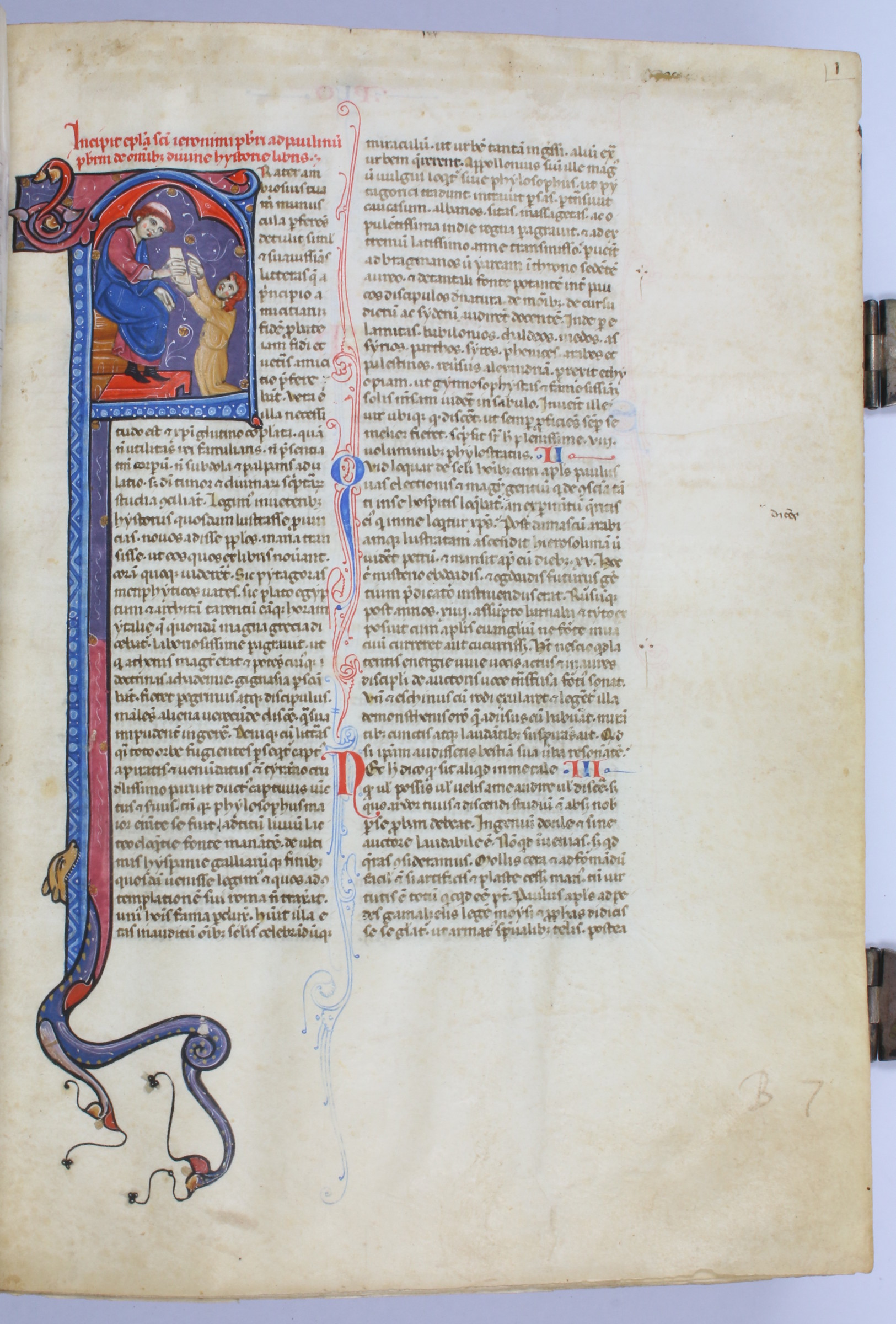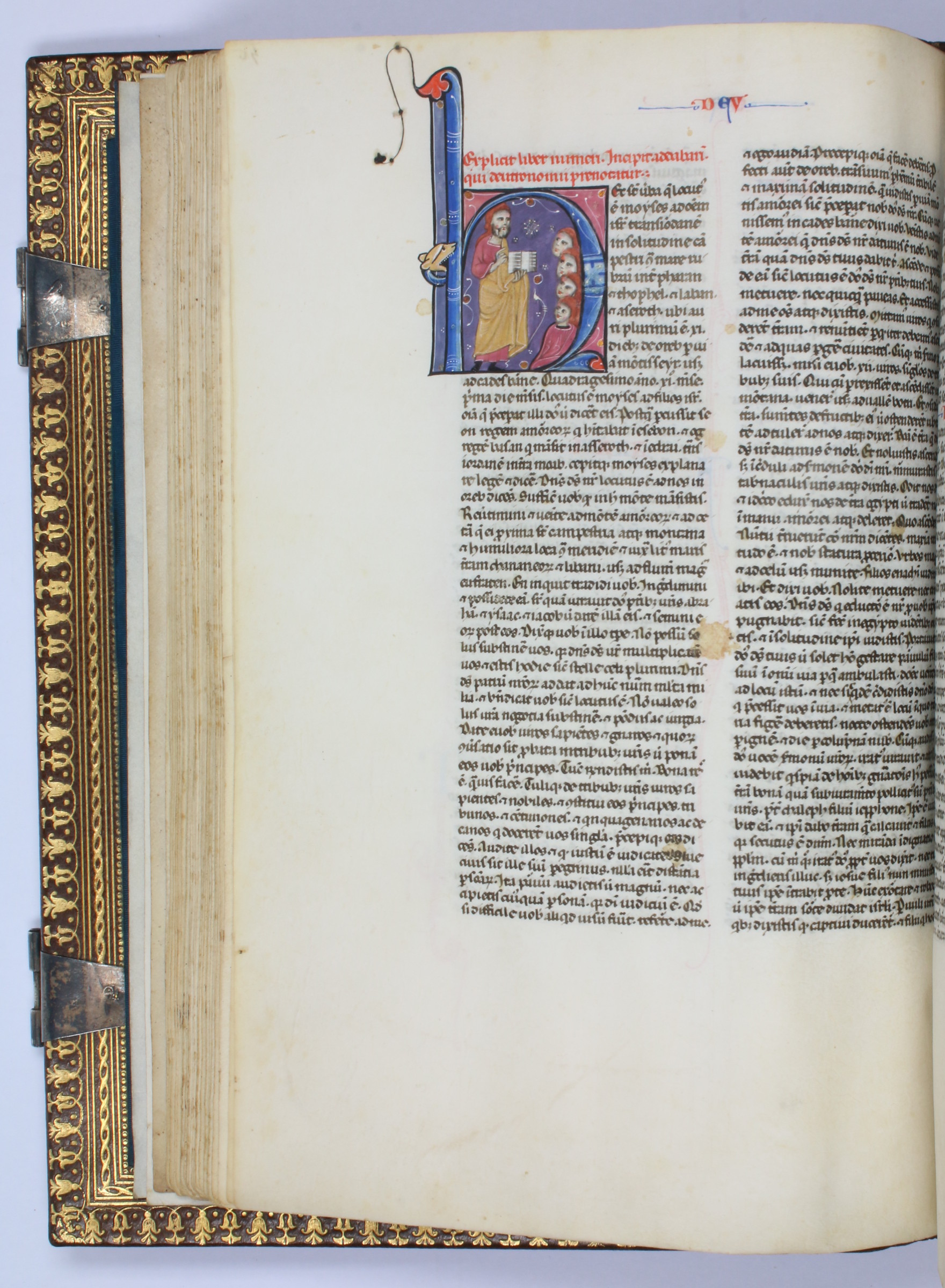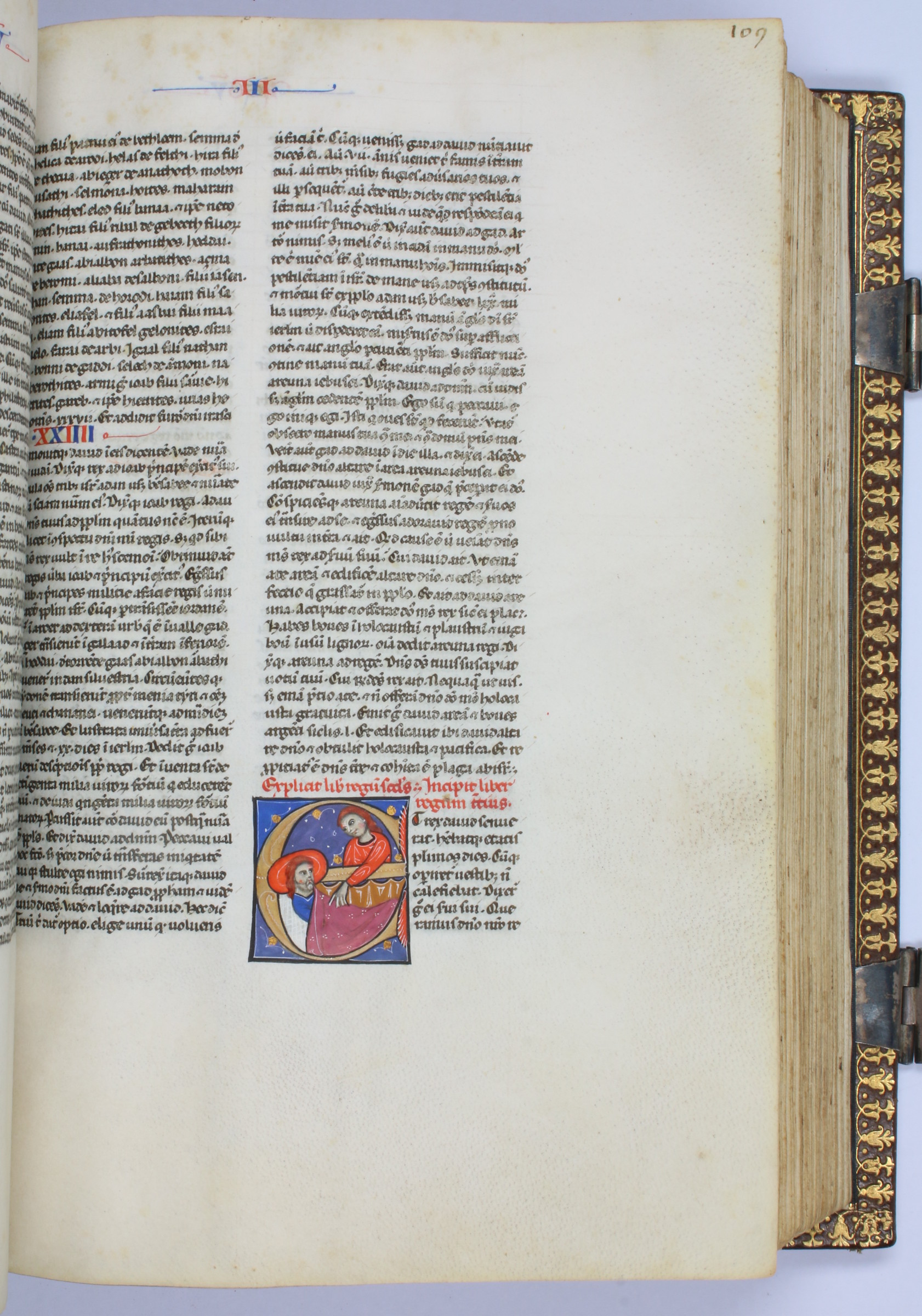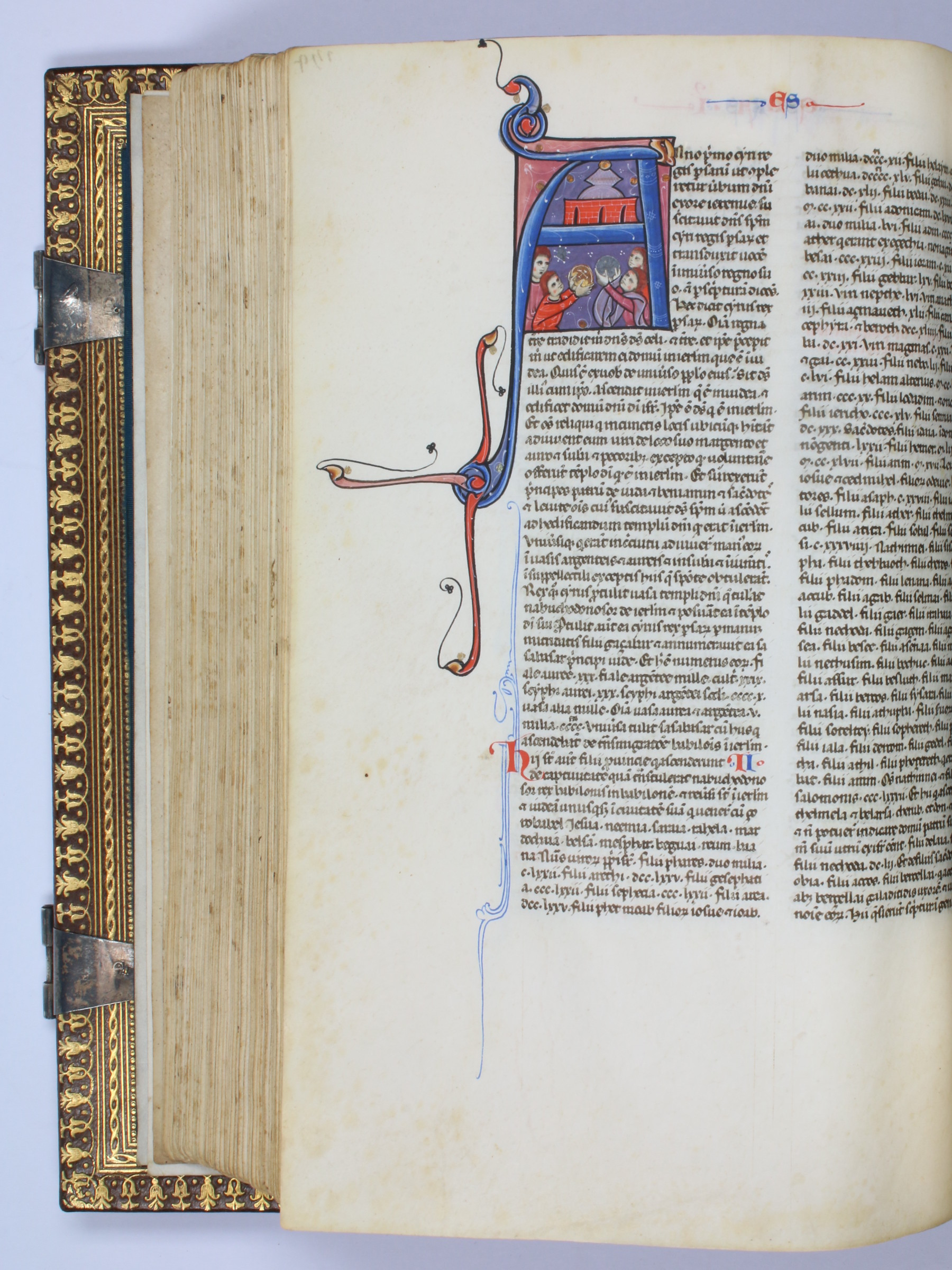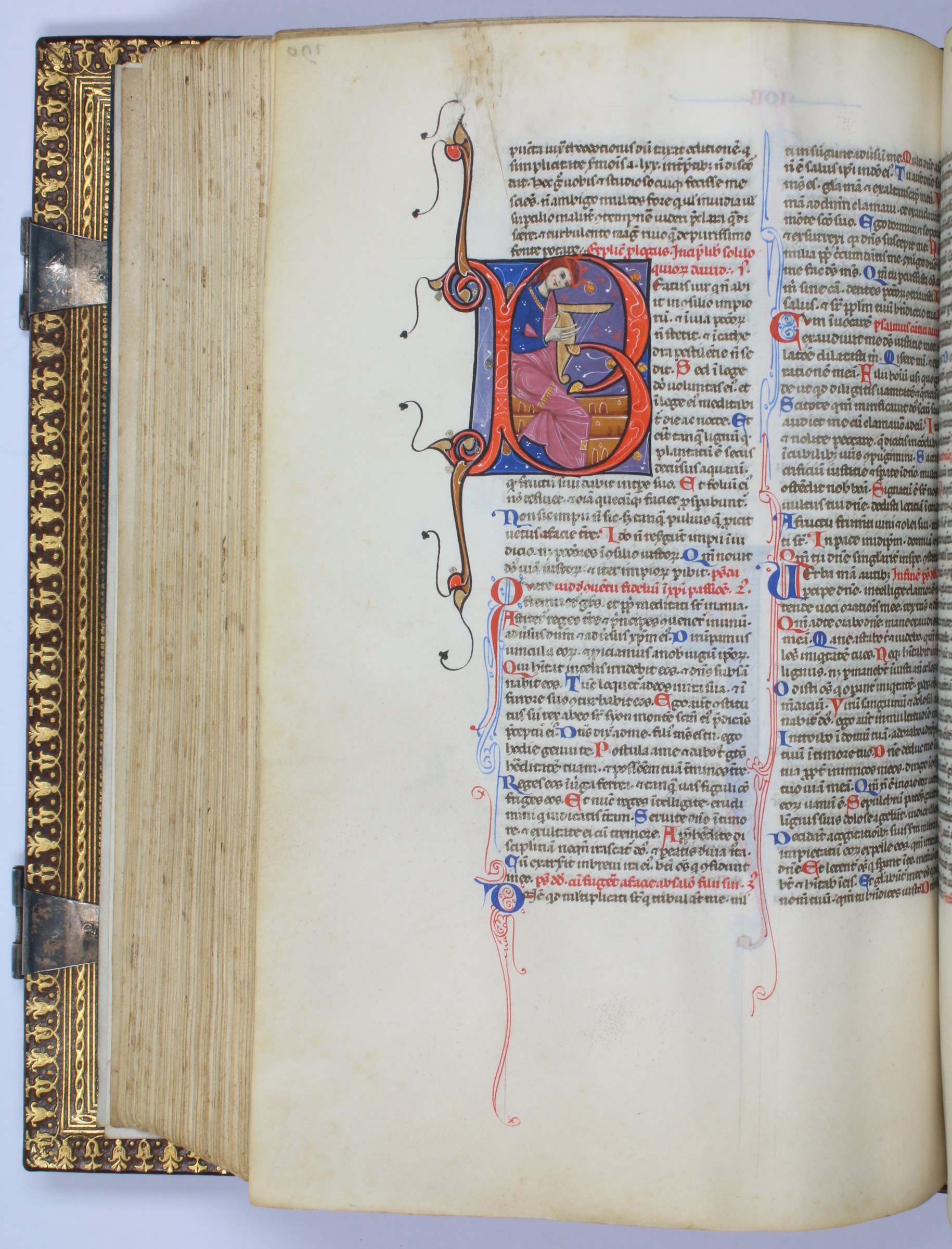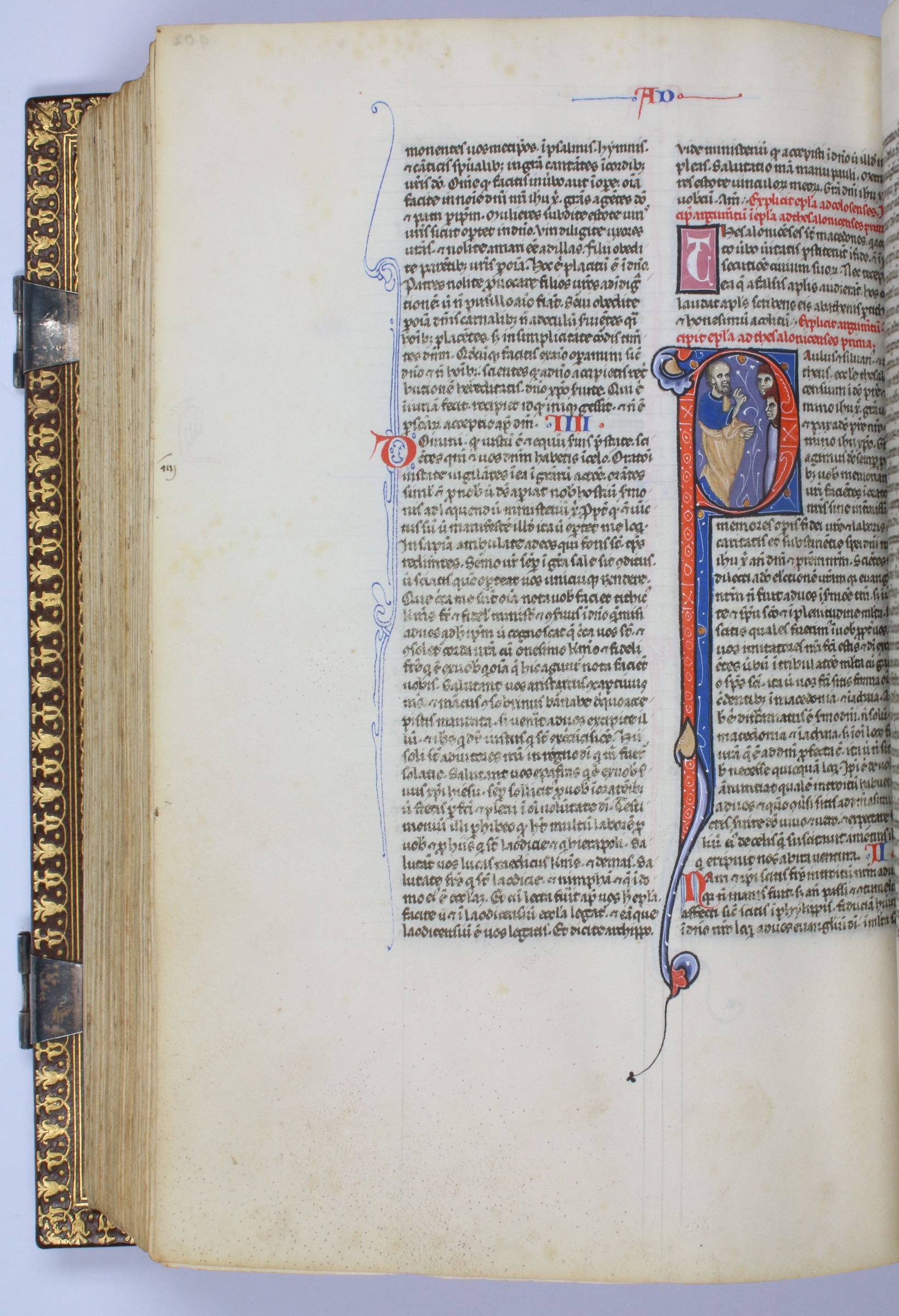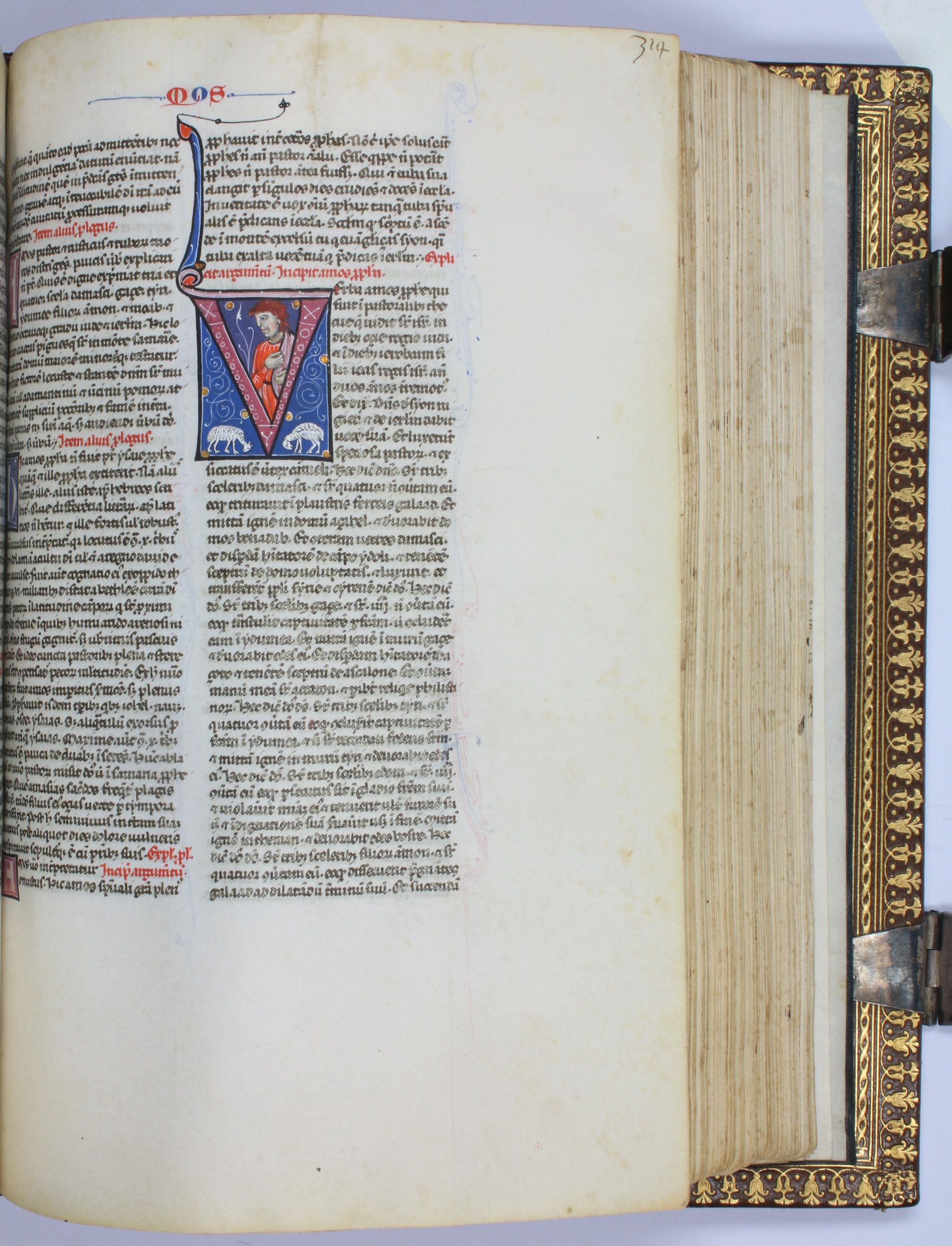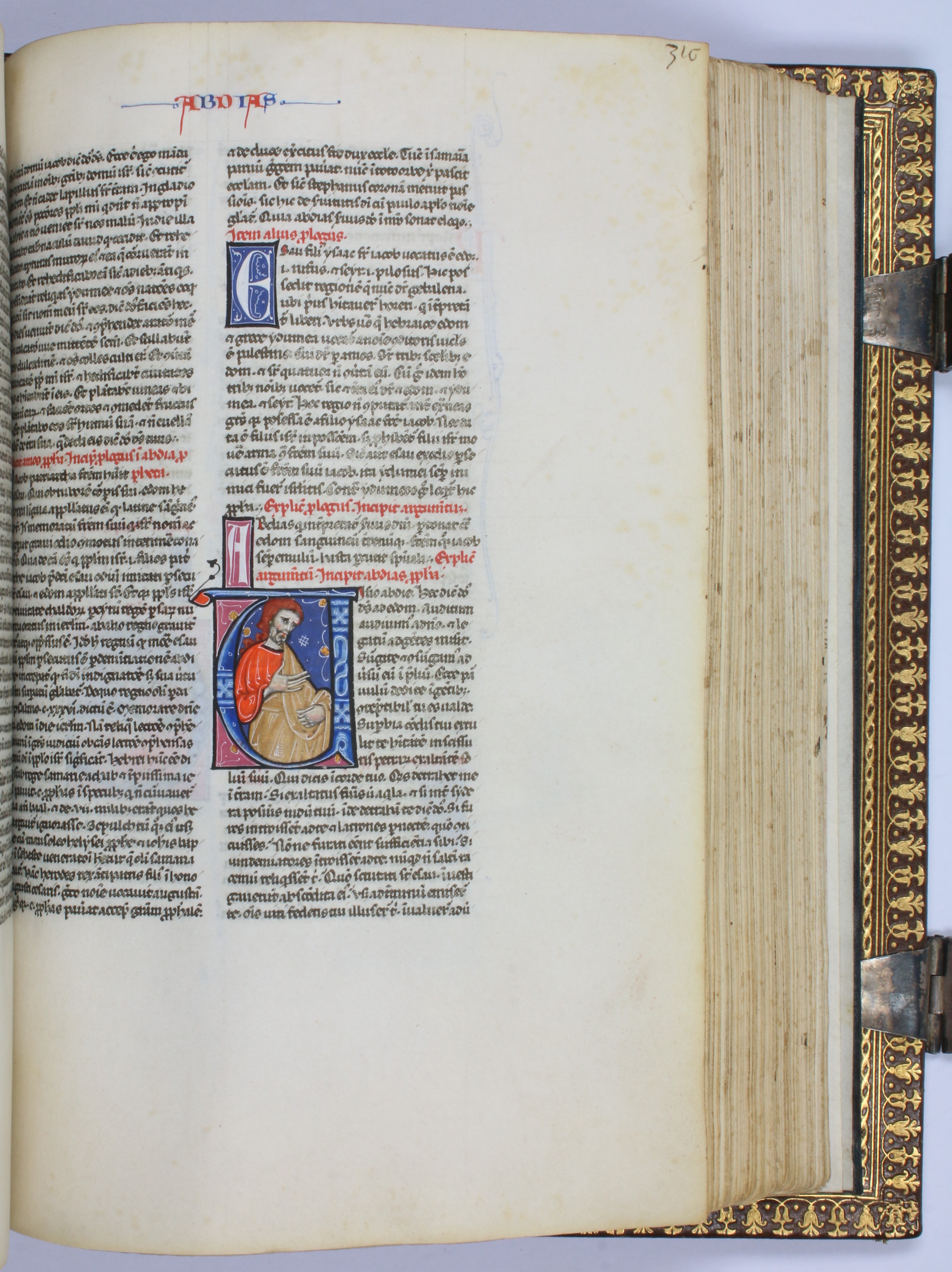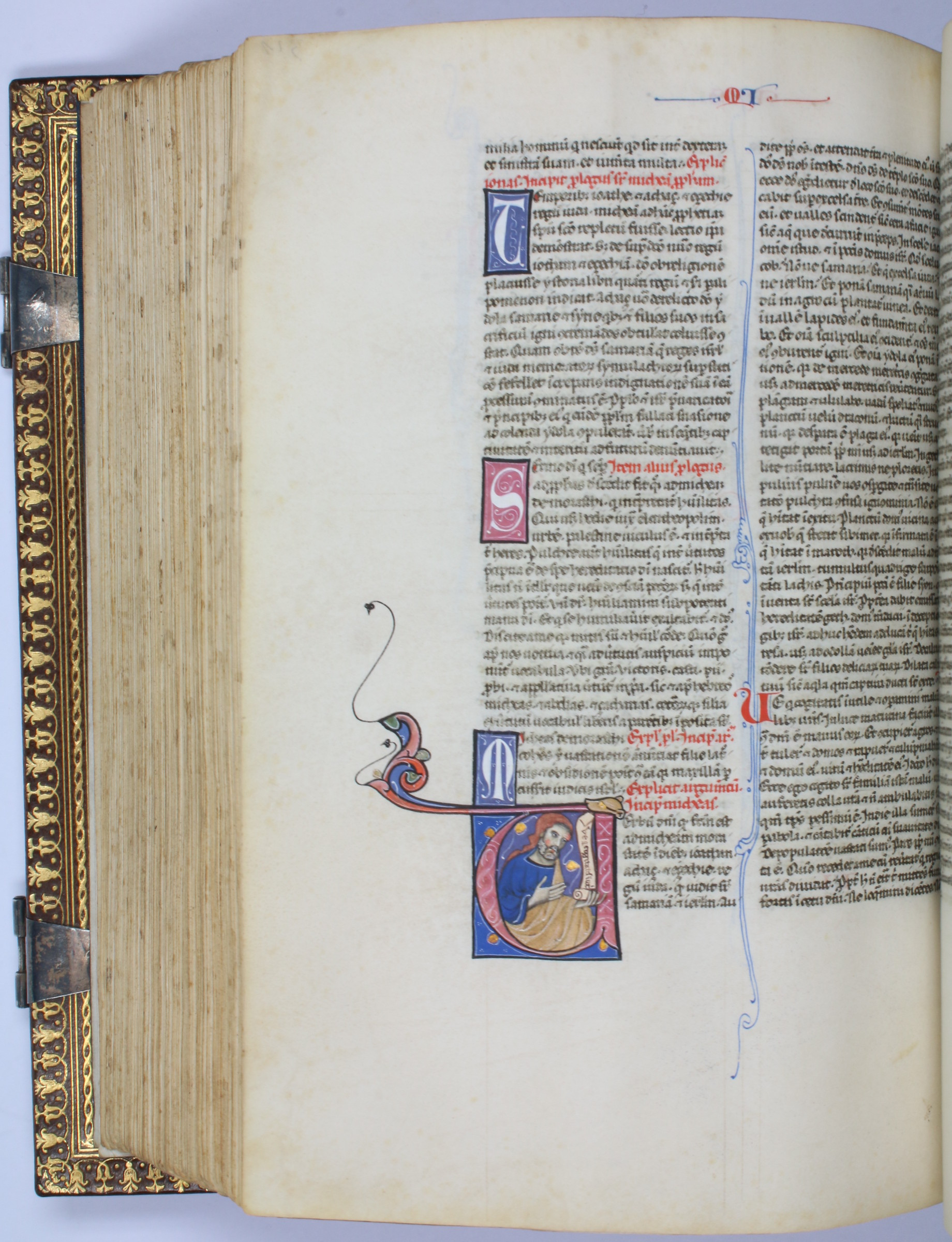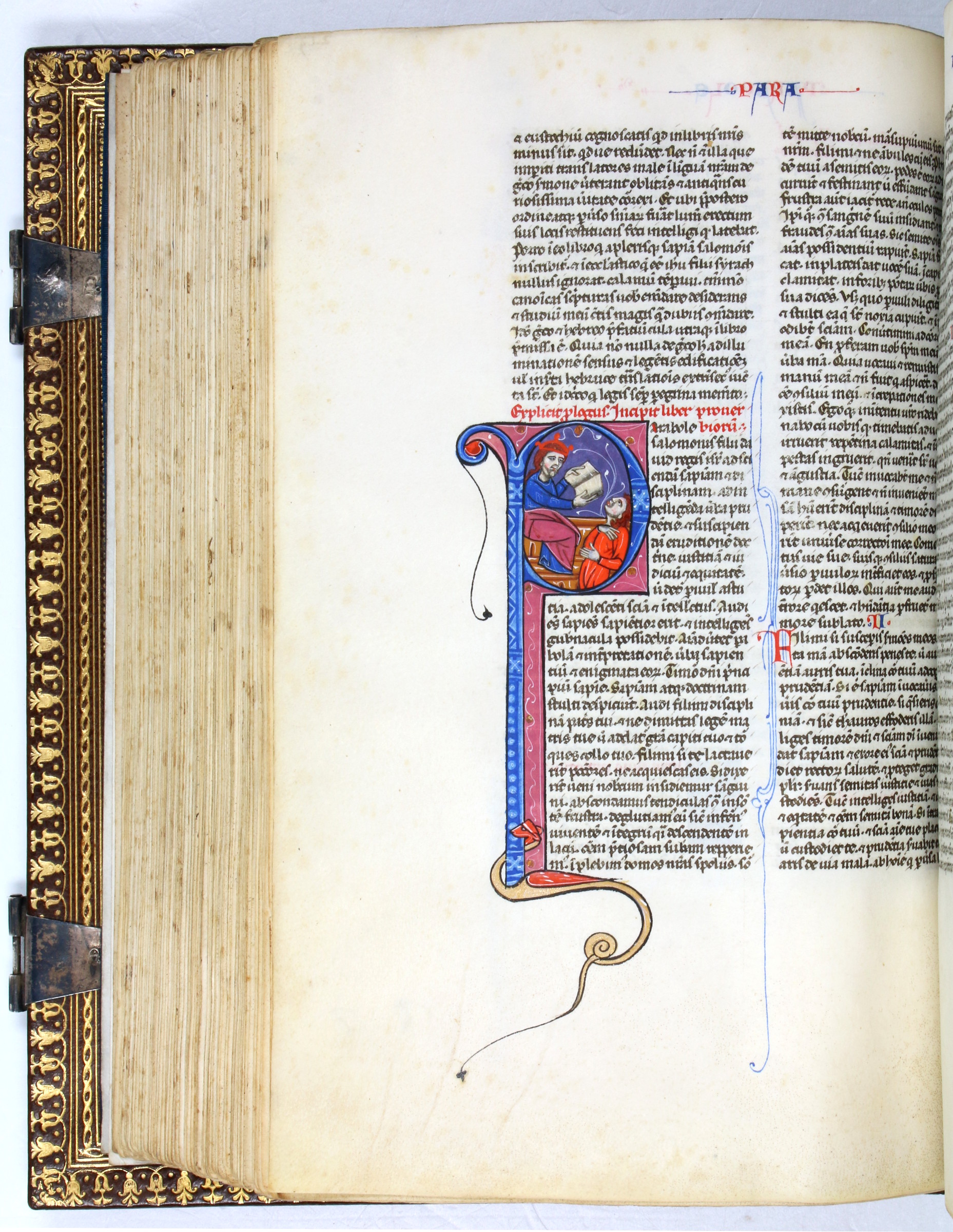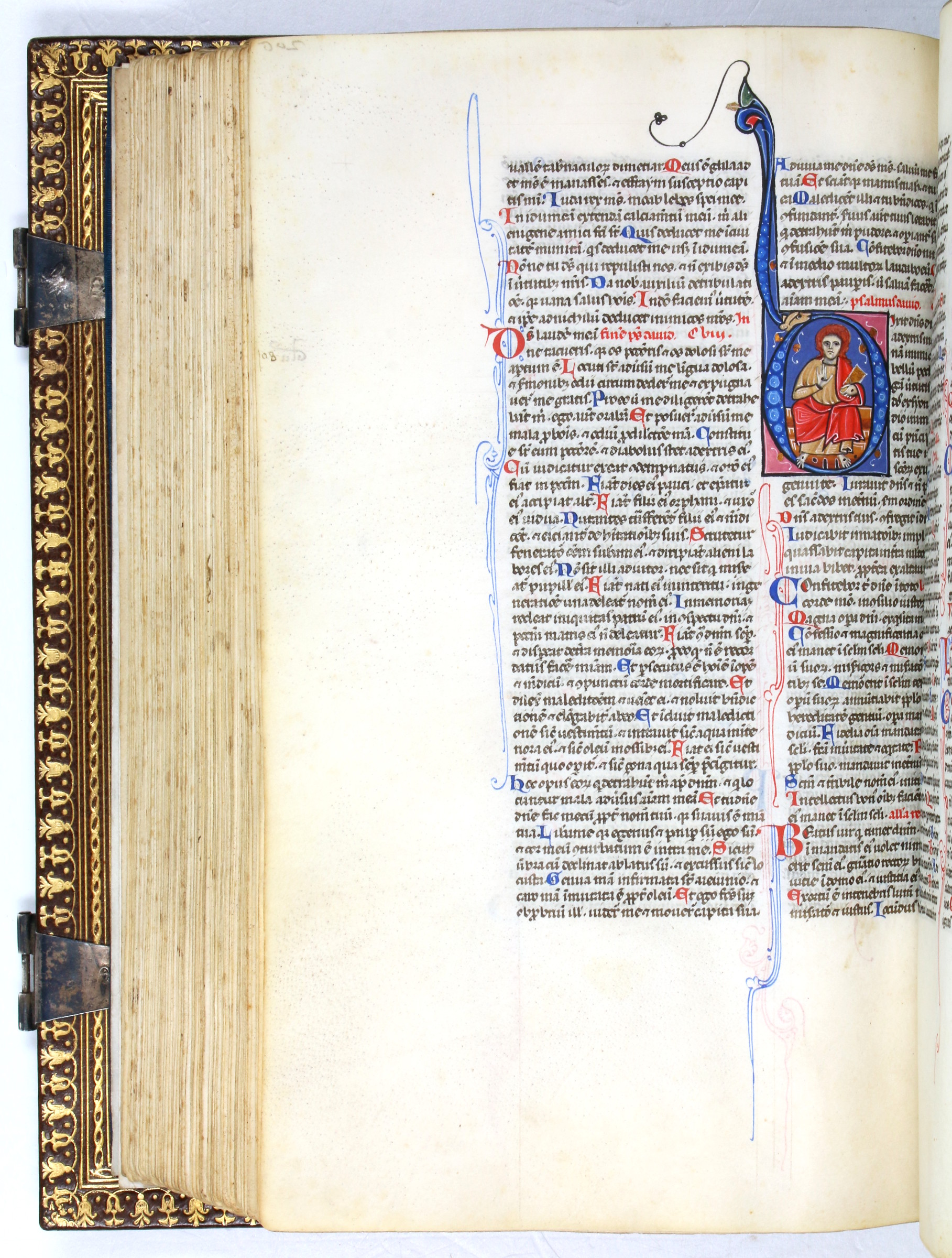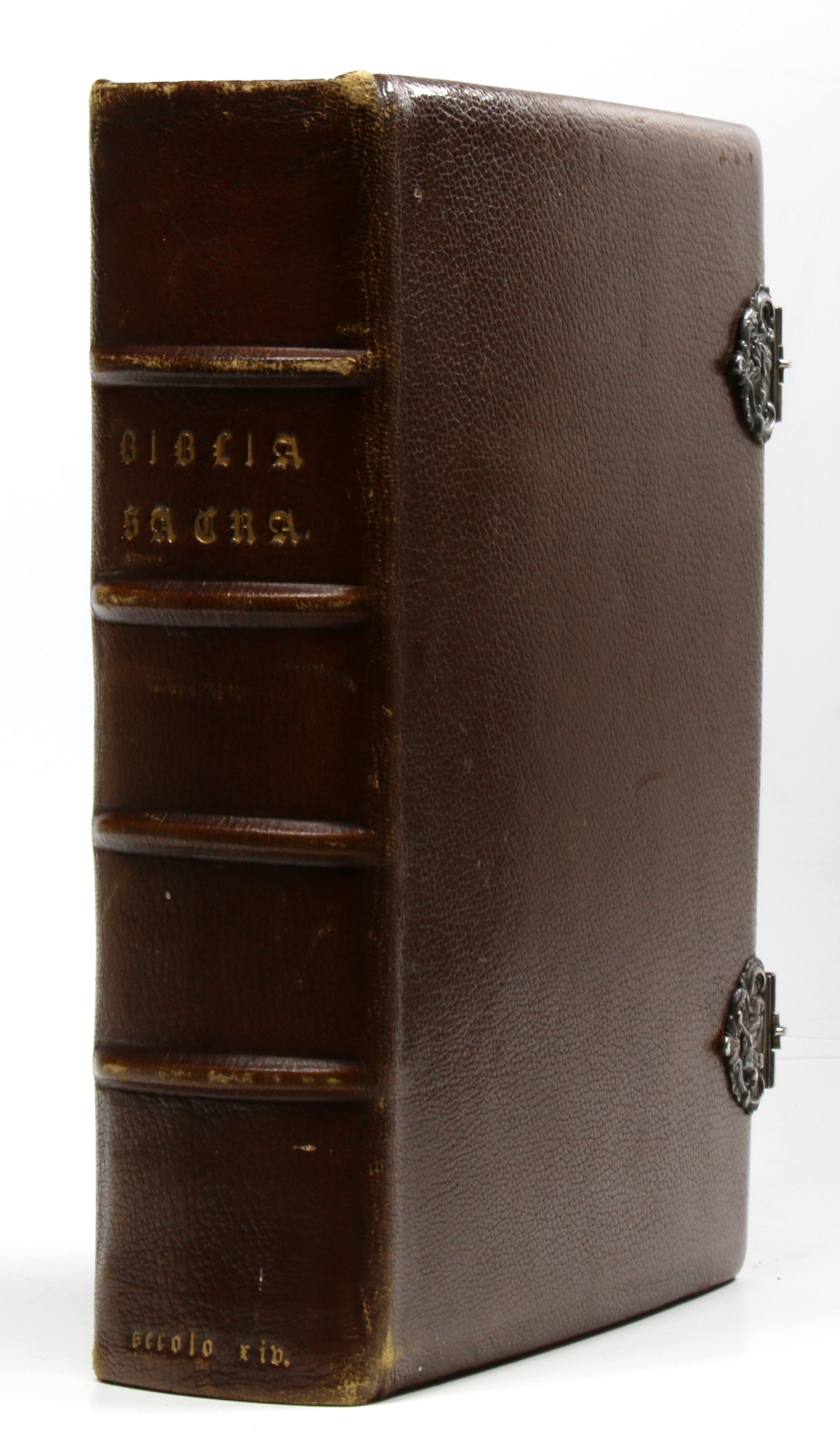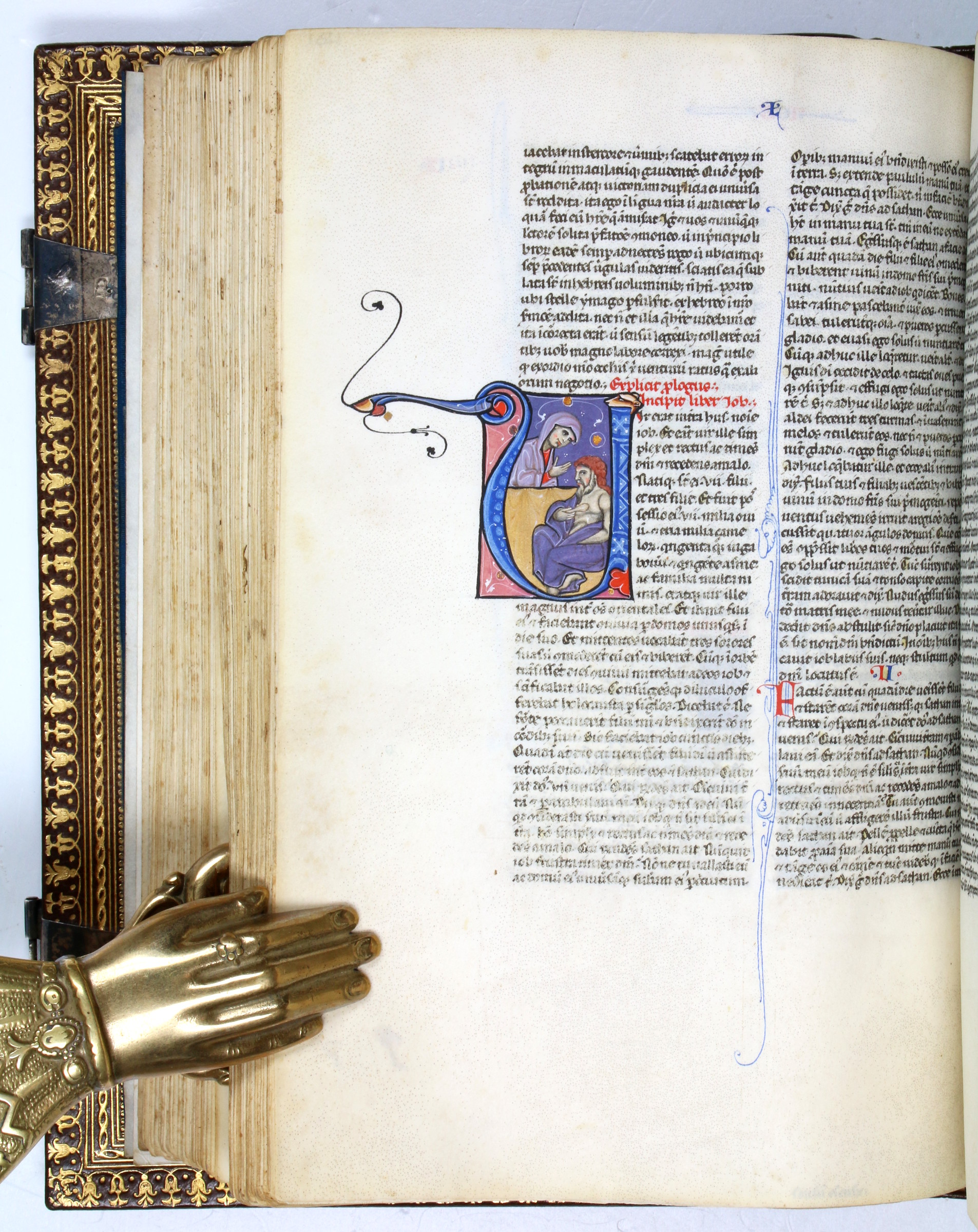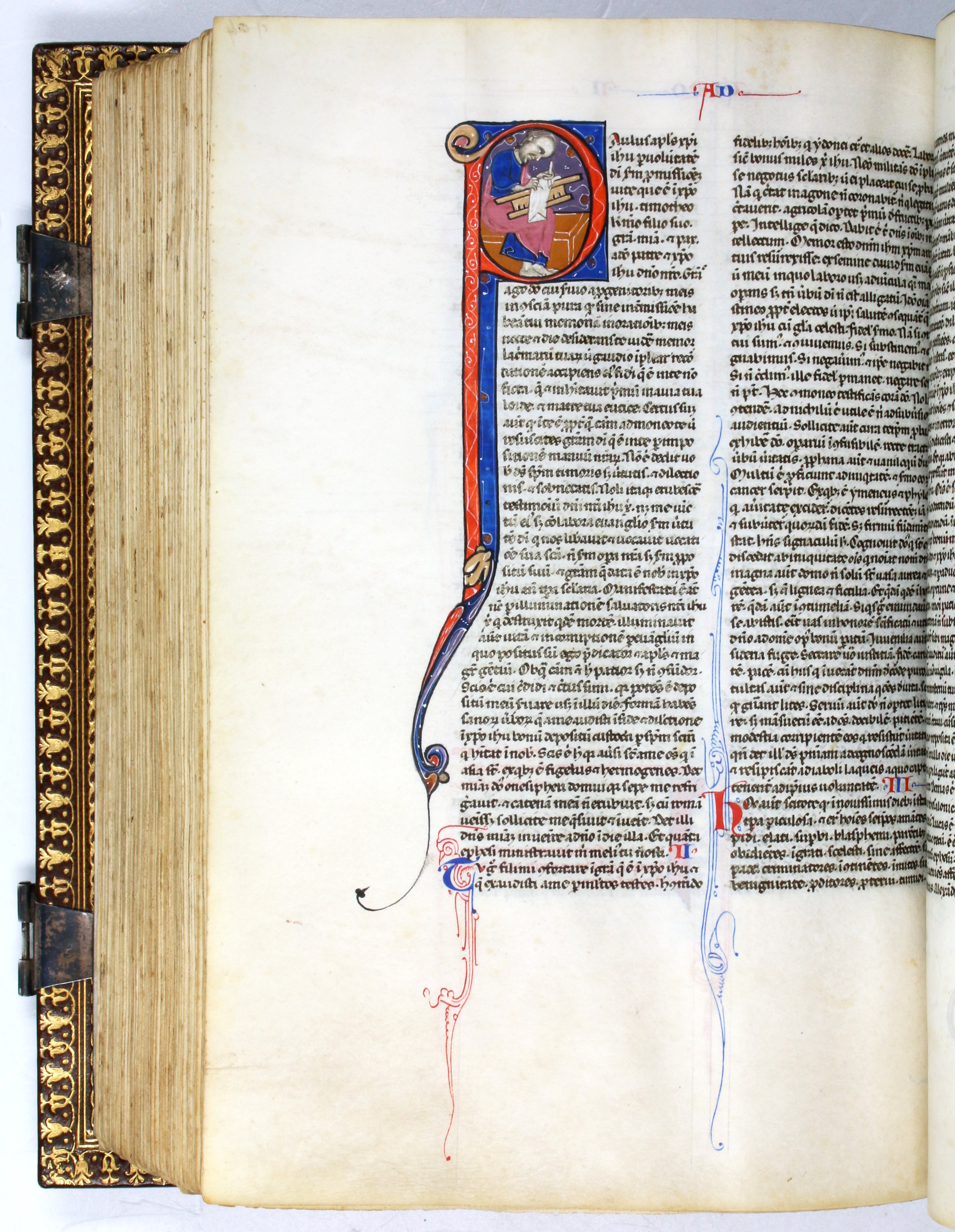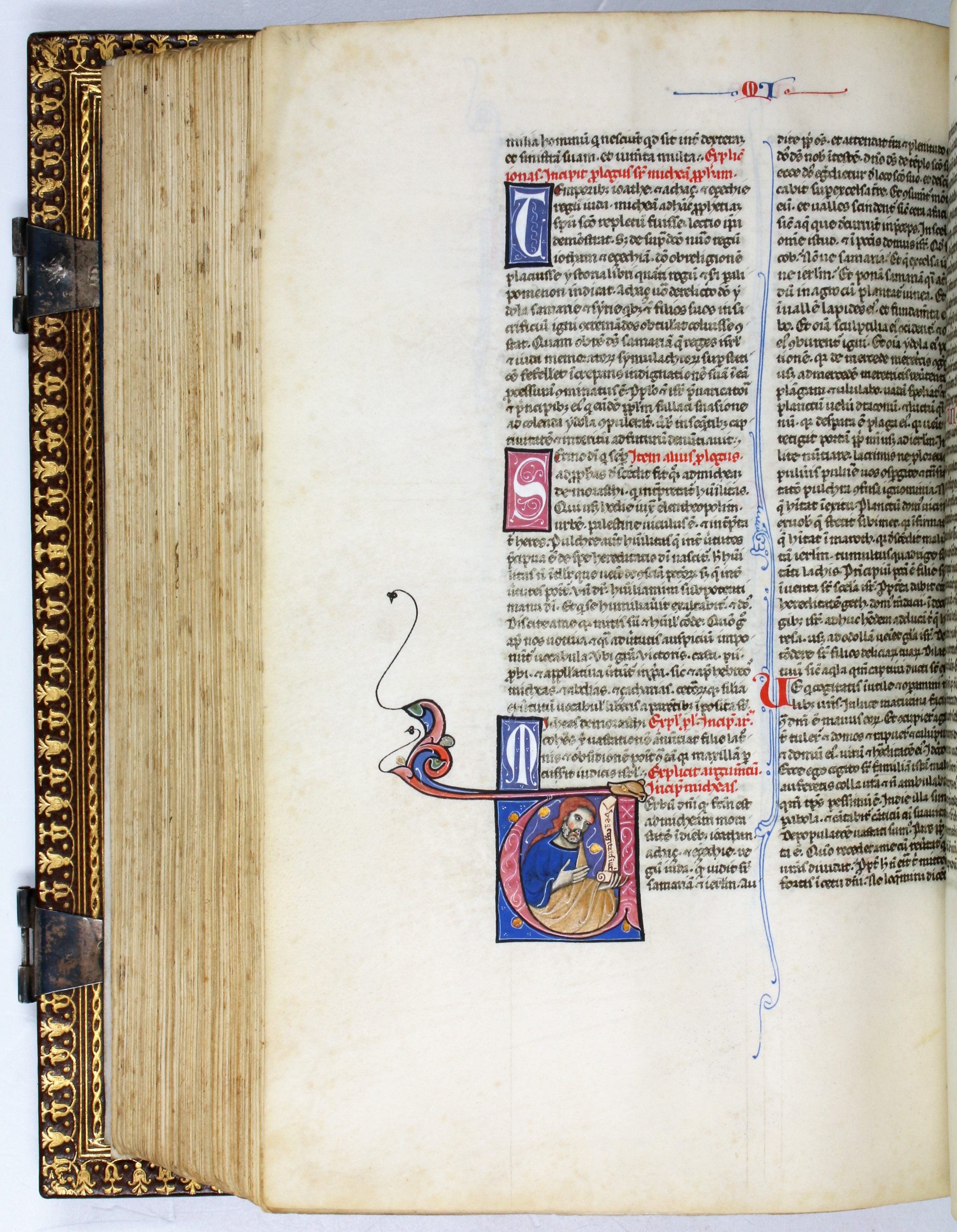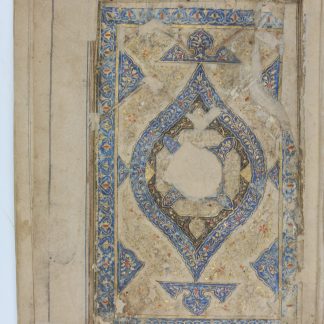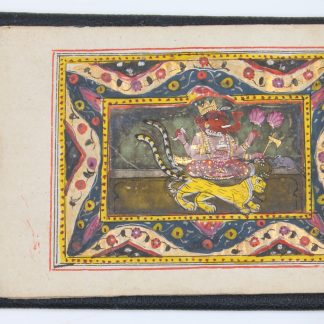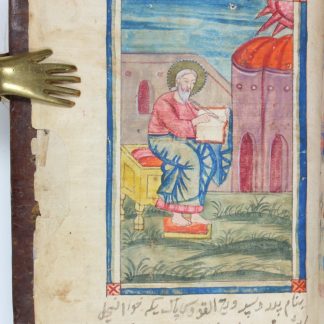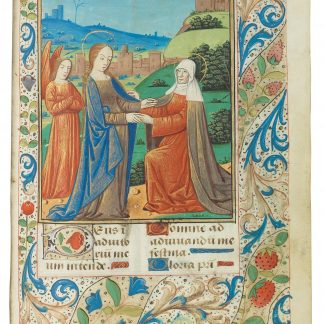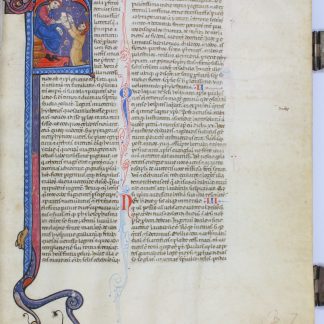A lavishly illustrated portable Bible from southern Italy, Dominican use
Biblia latina. Illuminated manuscript on vellum.
4to. Illuminated manuscript on vellum. (4), 432, (38), (2) ff. With 85 beautifully historiated initials, ca. 45 plainer painted initials, and smaller initials to chapter openings painted in red or blue. 19th century full brown crushed morocco by Kerr and Richardson, Glasgow, spine lettered in gilt.
€ 480,000.00
A lavishly illustrated, complete quarto Bible manuscript from southern Italy, decorated in the later 13th century, around the time of Emperor Frederick II. The content and order of the various books correspond entirely to those common for 13th century small-format Bibles. A highly unusual survival: portable Bibles were not usually illuminated (only a third of French manuscripts contains illustrations), and Italian examples are especially rare. Indeed, a survey of 1500 small-sized Bibles revealed that only 16% were (northern) Italian, mostly from Bologna.
A group of Dominican friars is painted in the initial at fol. 204r, attesting to use by a Dominican community. The friars are shown chanting the psalm "Cantate Domino", reading the music from a codex opened on the lectern and wearing the white habit of the Order under the cloak.
The manuscript displays an amazing variety of initials, all different from each other and painted in bold colours. As Prof. Milvia Bollati (Università Cattolica del Sacro Cuore, Milano) has kindly pointed out, they are stylistically close to those of the Manfredi Bible in the Vatican (MS. Vat.lat.36), the famous Bible written and decorated for Manfredi, son of Frederick II, Prince of Taranto and later King of Sicily (1258-66). The scriptor Iohensis who signed that Bible is also known for the transcription of two other manuscripts, "De balneis Puteolanis" (now in Rome, Bibl. Angelica, MS 1474) and a Bible now in Paris (BnF, MS Lat. 40), both illuminated by the same Master of the Manfredi Bible. This illuminator counts as one of the most outstanding masters active at the Hohenstaufen Court, and several other manuscripts, mostly Bibles, have been attributed to his hand (Paris, BnFrance, MS Lat. 401, MS Lat. 104282, MS Lat. 2173; Palermo, Bib. Cent., MS I.C.13; Trento, Bibl. Comunale, MS 2868; Turin, Bibl. Univ., MS E.IV.14; London, BL, Add. Ms. 31380; Bourges, Bibl. Municip., MS 5). This entire group is the production of an atelier, and many artists may be identified as having collaborated on any single manuscript. Notably, our Bible shares with this group the characteristic decorative motifs of the historiated initials and similar stylistic features; it also shares with the Manfredi Bibles group the mise-en-page and elegant pen flourishes. Another feature relating to this series of precious illuminated Bibles is the extraordinary iconographical variety in the illustrations. Stylistic affinities therefore suggest that the anonymous illuminator may have belonged to the circle of the Master of the Manfredi Bible. While the manuscript contains no original provenance information beyond the use by a Dominican community, it may be conjectured that this Bible could have been in use by the Dominican convent in Palermo or the San Domenico Maggiore convent in Naples, where the Studio Maggiore was located. The use of portable Bibles is well documented within Mendicant orders, and in particular by Dominican friars for their preaching activity.
4to (155 x 216 mm). Illuminated manuscript on extremely fine uterine vellum. (4), "433" (but: 432), (38 [index of Hebrew names]), (2) ff. (several errors in foliation: 3 and 23 assigned twice; 212, 233 and 303 skipped). With 85 beautifully historiated initials (including 5 zoomorphic examples), extending into the margins with decorative flourishes, ca. 45 plainer painted initials, and smaller initials to chapter openings painted in red or blue; text with fine marginal decoration of tendrils in blue and red, running rubricated book headings painted in red and blue. With many manicules and some contemporary corrections in the margins. Margins (nearly) untrimmed with pinpricks still visible. Bound in 19th century full brown crushed morocco by Kerr and Richardson, Glasgow, with spine lettered in gilt.
In splendid condition; a single miniature (in fol. 223v) has been excised. The six leaves of lection lists at the front and back of the volume, explicitly mentioning Dominican use, must have been added in a separate, though still early phase of production, since in these alone are the blue capitals executed in azurite, instead of the mineral lapis lazuli used consistently throughout the main body of the book. The manuscript and the colours used for the illumination have been examined by the interdisciplinary "Team Pigment" project at Durham University, headed by Professors Andrew Beeby (chemistry) and Richard Gameson (history), confirming that the pigments and workmanship are wholly consistent with having been produced in Italy during the second half of the 13th century, and ruling out any evidence of modern retouching. A 19th century handwritten description of the MS in Italian and English, erroneously dating it to "Secolo XIV", is loosely inserted at the back of the volume. A full collation of the Bible's books, as well as a spectroscopic and photomicroscopic analysis, are available on request.
Cf. Dizionario biografico dei miniatori italiani, ed. M. Bollati (Milan, 2004).

